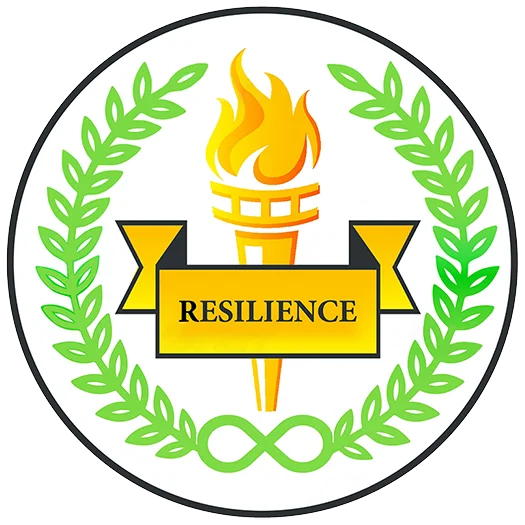What is Social Awareness?
Unfortunately, social-awareness is often conflated as a linear progression through states of development for socialization. For instance, when children are said to have matured into the first state of social-awareness and past their nascent narcissistic state, which allows them to build their first relationships through playing with others. Hence, they are said to have established what psychologists in the field refer to as a theory of mind, meaning they no longer consider their own needs and desires over everything. Instead, they are said to awaken to a wider state of consciousness in taking their first steps to socialization; diligently taking into account the many desires and needs of others, as well as beginning to learn social norms dictating subsequent interactions in public and private spaces.
However, this, of course, belies the buried richness of meaning that lies beneath the intricate edifice we call self-awareness. Namely, we must start to consider the proper constructions of a self-image by which one demonstrates the ability to accurately recognize one’s own emotions, thoughts, and values within each and every context of our daily lives. Along with the ability to understand the full impact of their decisions and recognize the pros and cons in the long term of such decisions. Moreover, renowned psychologist and author Daniel Coleman describes self-awareness in his work, “Emotional Intelligence” as “knowing one’s internal states, preference, resources, and intuitions.” According to Collaborative for Academic, Social & Emotional Learning CASEL – serves as a key resource for Social & Emotional Learning.
Self Awareness is comprised of the following five key components:

- Identifying emotions
- Accurate self-perception
- Recognizing strength
- Possessing strong self-confidence
- Possessing self-efficacy
Pathway To Self Actualization
While the pathway to self-actualization can be a long and daunting one, it nonetheless can be well cultivated by solid emotional development inasmuch as we are able to learn to recognize our states of well being.
As David Gelernter so eloquently put it, “.. our emotions summary has to bait and hook a particular fish of recollection from out of the thriving ocean of memory. Hence, without emotions, you would have nothing to go on. You cannot recall a memory by processes within the mind with nothing to go on.” Unlike a computer, we have to guide through often turbulent tides of raw emotions in order to recount and resolve harrowing experiences. In his work, “The tides of mind: uncovering the spectrum of consciousness” emotions are not only for self-actualization and learning norms, but also “powerful summation units,” as he puts it. That is, emotions serve as our recall memory and, unlike computers, it is not a linear circuit process. Instead, as emphasized by the continuing metaphor used in his book, emotions anchor memories by way of continual emotional recall. Often times, it can provide calm seas where your next memory and development is clear on the horizon and can be navigated to easily whereby you avoid storms of inner emotional conflicts.
At other times, the seas become turbulent when you’re unable to recall without raw emotions in order to access a troubling memory that has been repressed. Hence, learning to temper emotions to the betterment of your mental state is imperative in order to maintain a healthy and stable mind. Just as a captain of an old rickety ship might undergo repairs on turbulent seas and has to be able to issue clear commands to the crew in order to keep the vessel afloat, so too should we take the helm at all times in order to maintain our best possible mental course.

Self Perception
Accurate self perception means maintaining an honest account of character you present in the world. Accurate self perception basically means aspiring to be what Aristotle referred to as being one with the golden mean. Neither believing that you are the most untouchable person, or believing yourself to be the most reviled. Instead, it’s about stepping back and taking a clear look in the mirror whereby assessing your strengths and weaknesses in order to strive daily to improve your overall complexion of character. Dr. Robert C. Roberts, professor at the Jubilee Center for Character and Virtues, emphasizes extensively on this in his: “Self-Perception and Humility: The Importance of An Accurate Self-Image.”
 Self Confidence
Self Confidence
Possessing self-confidence: This is easily one of the most consequential facets of self-awareness. Without it, one cannot progress and better their emotional state. Simply put, self-confidence is your drive (what gets you out of bed in the morning). The purpose-driven life, as philosophy teaches us, is one of self-examination. The purpose-driven life is also to live an unexamined life is not worth living. Meaning, once we established the aforementioned attribute, we then need to build confidence over a lifetime by honestly assessing ourselves which will create solid foundations on which to build the structure of confidence whilst maintaining some humility

Self-Efficacy
How can we establish and achieve our goals on a daily basis with precision and prudence? One cannot achieve their goals without having been made aware of the hurdles and strengths needed to traverse such challenges betwixt you and the finish line. A central part of this is recognizing your weaknesses and learning to perfect them. Meaning, learning to hone your failures into ones which will one day ripen into later successes. After all, the history of science itself is truly nothing more than a long series of trials and errors perfected by sophisticated people of errors; all of whom were able to fasten from the errors of yesterday into working proven solutions of tomorrow.
Methods inside the classroom:
- Bringing an appreciation to students on the science of Metacognition and how their brains are wired for growth.
- Instill in students the self-efficacy needed to tackle and recognize what they do not grasp.
- Bring to students appreciation for the art of reflection/ self-reflection by integrating opportunities to practice it in coursework.
- Bring to students self-reflection via learning journals.
- Create wrapper activities (an activity which concludes a lesson by having students write down three key ideas/ takeaways from each lesson, then comparing it to ideas from the teacher). All of which are aimed at bettering their listening and monitoring skills.
- Create essay exams over multiple choice ones. (Not only would you grant students creative insights into their own writing abilities earlier, you would also avoid the pitfalls of instilling into students’ complacency of using lower level thinking skills for all tests when you just have multiple choice as studies indicate).
- Create exercises that require critical thinking that makes students learn to be aware of their biases.
Methods outside the classroom:
- Self-examination daily
- Maintaining a journal
- Writing down one’s goals, plans and priorities
- Performing around the kitchen table exercises of self-reflection for your family
- Engaging in meditation and other mindfulness habits
- Undergoing personality and psychometric tests
- Asking friends for their unfiltered descriptions of you
- Asking for the same above from co-workers

What are the benefits of self-awareness:
- Develops resilience: The American Academy of Family Physicians states that self-awareness strengthens one’s resilience by allowing one to be aware of external stimuli better and more tact in picking up on internal cues. That is, being insightful on one’s own strengths and weaknesses, in order to see the extent of your insights and recognize your blind spots.
- Improves classroom participation/performance: Understood.org explains how self-awareness benefits students in the classroom, especially those with learning and attention issues.
- Recognize their strengths and weaknesses.
- Immediately identify what they need to do in order to complete the task in front of them.
- Recognize errors in school work and make edits and changes.
- Understand and be able to discuss matters of dissonance and feelings.
- Recognize others’ needs and feelings.
- Be able to recognize how their behavior affects others.
Ways this prepares individuals for the “Real World”
As explained by, Developgoodhabits.com, individuals who are self-aware are prepared for a variety of careers in the workforce, including :
- Leadership roles
- Social work
- Counseling
- Education
- Nursing
